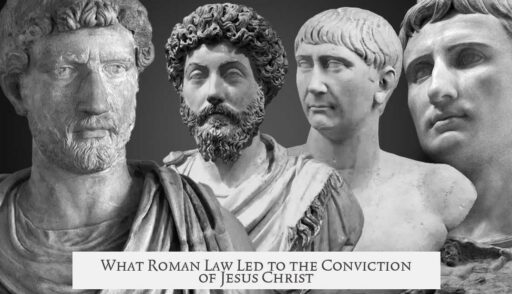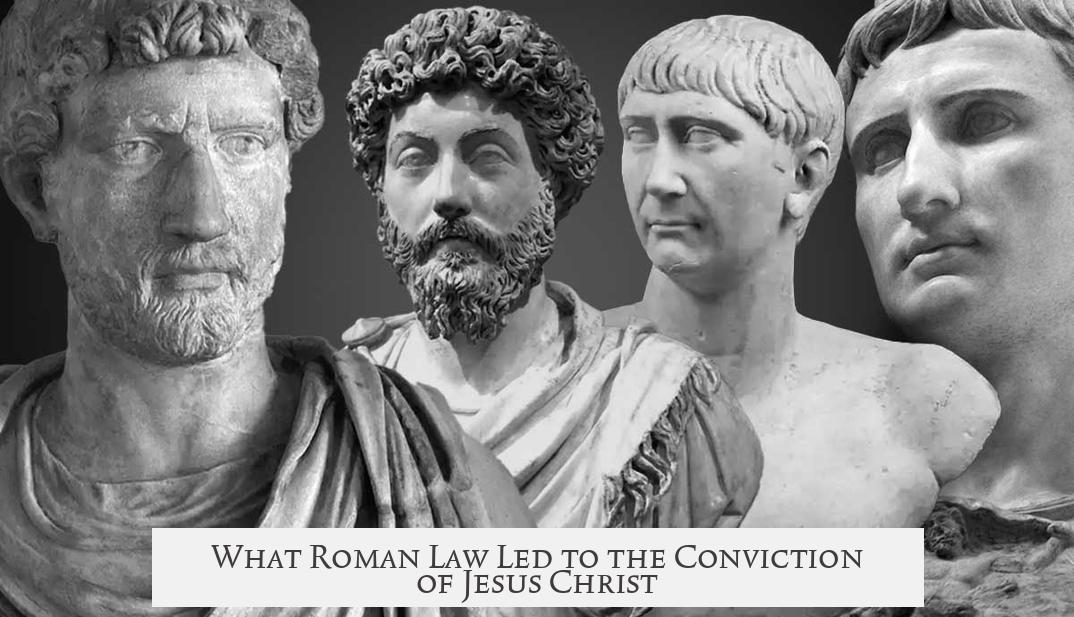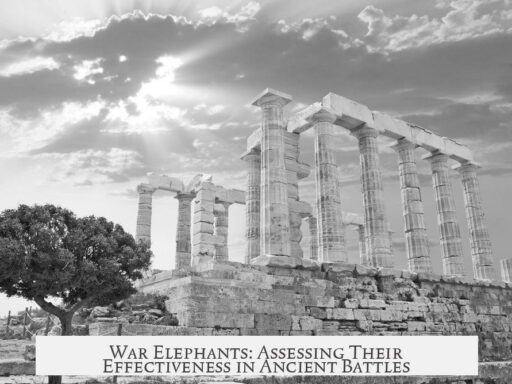Jesus Christ was found guilty by Roman authorities primarily on charges that amounted to sedition, based on his alleged claim to be “King of the Jews,” an offense interpreted under Roman law as a political threat. Although the Gospels do not specify the exact Roman law, most scholars agree Pilate condemned Jesus under laws similar to the Lex Iulia de maiestate, which criminalized acts or claims seen as undermining imperial authority.
Jesus was not a Roman citizen but a subject of a client kingdom, which means his legal status placed him outside direct Roman civil protections. The local Jewish authorities, the Sanhedrin, arrested and accused him of blasphemy, a religious crime under Jewish law. However, they lacked the authority to impose capital punishment. For execution, they handed Jesus over to Pontius Pilate, the Roman governor, making his case a matter of Roman law enforcement.
During Jesus’s entry into Jerusalem, people greeted him with palm branches and cloaks, a traditional symbol of homage usually reserved for kings. To the Romans, this public display resembled an adventus (a ceremonious welcome) usually given to rulers. This raised alarm among both the Sanhedrin and Roman officials, fearing Jesus aimed to challenge Roman rule by claiming kingship.
These fears triggered the political charge. Roman authorities considered such claims dangerous because they suggested rebellion or sedition. The Lex Iulia de maiestate was a Roman statute focused on treason and offenses diminishing the emperor’s authority and public order. By proclaiming himself “King of the Jews,” Jesus was likely charged with violating this law.
- Jesus’s presentation as king was a direct threat to Roman imperial control.
- Pilate’s legal authority enabled him to order punishment, including flogging and execution.
- The Gospels show Pilate tried to avoid responsibility and offered the crowd a choice to release Jesus or Barabbas, a known insurrectionist.
- Despite limited evidence of a formal trial procedure, Pilate sanctioned Jesus’s crucifixion as a means to suppress unrest.
Pilate’s role reflects political pragmatism. He appeared reluctant but prioritized maintaining peace during Passover, a volatile time in Jerusalem. The act of crucifixion served as a deterrent against rebellion and kept order. Pilate publicly washed his hands of the decision, signaling his attempt to distance himself from the execution while ensuring Roman authority was preserved.
Although blasphemy was the main religious accusation by Jewish leaders, Roman charges centered on sedition. No detailed legal documentation survives, and the Gospels focus more on narrative than on courtroom procedures. Scholars caution against assuming a formal, thorough Roman trial by modern legal standards. Instead, Jesus’s condemnation reflects political dynamics rather than a strict legal case.
| Aspect | Details |
|---|---|
| Legal Status of Jesus | Non-Roman citizen; subject to client kingdom laws |
| Charges by Jewish Authorities | Blasphemy; no execution power |
| Roman Charge | Sedition for claim of kingship (“King of the Jews”) |
| Relevant Roman Law | Likely Lex Iulia de maiestate (law against treason/slander of emperor) |
| Pilate’s Role | Governor who authorized crucifixion to maintain peace |
| Trial Details | Limited Gospel information; suggests political trial rather than formal legal process |
The political tension around Jesus’s perceived kingship amplified the risk to Roman authority and local stability. Pilate sought to quell potential uprisings by executing an individual whose following could threaten imperial rule. Thus, Jesus’s guilt under Roman law rested mainly on his association with sedition and rebellion, not religious blasphemy.
- Jesus was charged with sedition due to his claim as King of the Jews.
- Roman authorities considered this a political offense under the Lex Iulia de maiestate.
- Jewish leaders accused Jesus of blasphemy but deferred to Roman capital authority.
- Pilate tried to avoid responsibility but ultimately ordered execution to keep order.
- The trial lacks detailed legal record; it was politically motivated.
What Roman Law Was Jesus Christ Found Guilty Of?
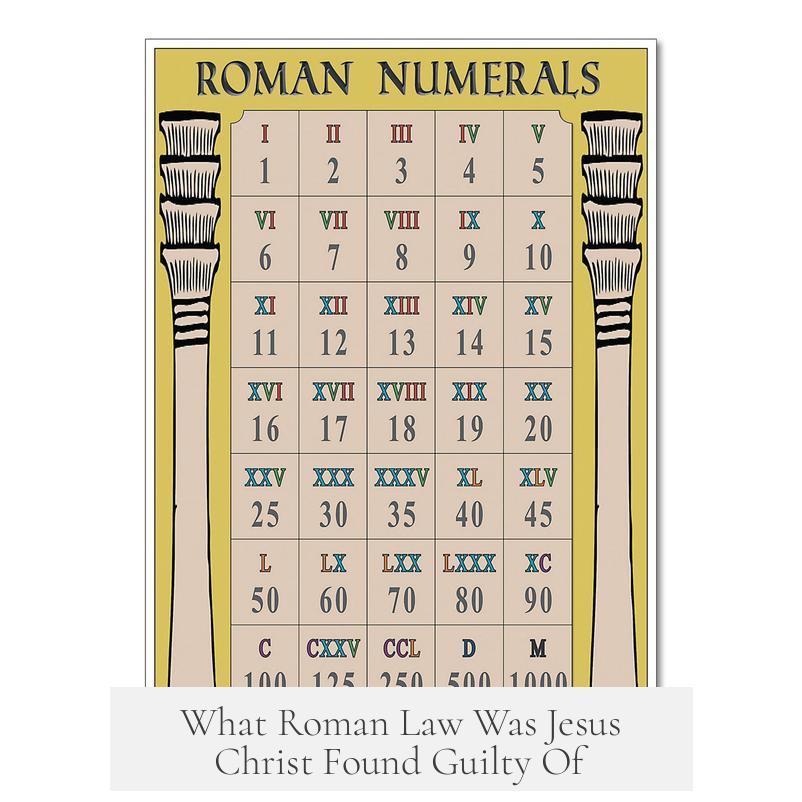
Jesus Christ was most likely found guilty under the Roman law of sedition, specifically the Lex Iulia de maiestate, which punished claims that threatened the emperor’s authority. But hang on, the story isn’t quite so simple—and it’s wrapped in political tension, legal ambiguity, and a dash of historical mystery.
Let’s unpack this fascinating episode through a solid Roman legal lens.
The Legal Drama: Jurisdiction and Citizenship
First, Jesus was not a Roman citizen. Unlike Paul, who famously exercised his citizenship rights to avoid certain punishments, Jesus was technically a subject of a client kingdom—Judea under Roman supervision.
This status matters a lot. Roman law treated citizens differently, offering protections and formal procedures. Yahweh’s son? Nope, just a Jewish peasant in the Roman world.
When Pilate, the Roman governor, gets wind of the whole situation, he tries to hand Jesus over to Herod, the local king. Herod shrugs and sends Jesus back. This shuttling around shows Pilate was wary of his jurisdiction. Pilate famously claims he has no legal grounds to condemn Jesus, which is essentially passing the buck.
The Jewish Angle: Sanhedrin’s Role and the Accusations
Backtrack to the Jewish leaders, the Sanhedrin. They see Jesus as a religious threat and pin blasphemy on him. Problem? They can’t legally execute anyone. That right belonged to the Romans.
So, they bring Jesus to Pilate, hoping he’ll handle the death sentence. But what’s the Roman crime? Not blasphemy—that’s strictly a Jewish issue.
What Did the Romans See? Sedition, Not Theology
Romans don’t care much about religious arguments. Their concern was politics. Jesus had a crowd greeting him like a king, waving palm branches and laying down cloaks in a giant royal fanfare. The Romans call this an adventus, a ceremonial entry reserved for kings and emperors.
Think: street parade with extra pomp, usually leading to crownings—not the best news for Roman peacekeepers. The Sanhedrin panics. A crowd possibly ready to crown someone “King of the Jews” looks like a political uprising.
To Rome, any claim to kingship outside the emperor’s say-so was a big no-no. That’s sedition, rebellion against imperial authority. So, Pilate acts.
The Legal Basis: The Lex Iulia de Maiestate
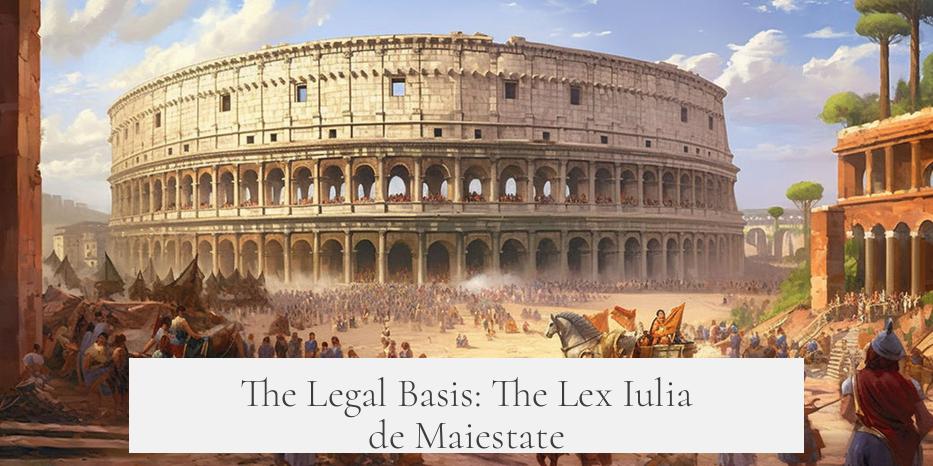
Here’s the kicker: the Gospels don’t spell out Roman charges, leaving historians baffled but not stuck. Scholars widely agree that the crime was sedition under the Lex Iulia de maiestate.
This law targets offenses against the emperor and his dignity, including false claims of kingship that could stir unrest.
Pilate likely viewed Jesus’s claim (or the perception thereof) as a threat to the Roman political order. This fits the placard that read “King of the Jews” on Jesus’s cross—a sharp warning and a mark of political judgment.
Was Pilate Just Covering His Back?
Another perspective hints Pilate wasn’t deeply invested in Roman law’s specifics. Some suggest he crushed Jesus mainly because he was a troublemaker, not a citizen, and Pilate wanted to keep the peace during volatile Passover celebrations.
When Pilate offers the crowd the choice to free Jesus or a known criminal, Barabbas, it looks like political theater. He orders Jesus flogged—he had the authority to do so without much oversight—and eventually allows the crucifixion.
As Pilate dramatically washes his hands, he signals cleansing himself of responsibility, blaming Jewish leaders for the decision. This move preserved Roman authority while quelling unrest—city and empire win.
What Does This Mean for Understanding Jesus’s Trial?
So, what Roman law was Jesus found guilty of? The best answer: sedition, under the Lex Iulia de maiestate, for claiming—or being perceived as claiming—kingship that challenged imperial rule.
The actual legal paperwork is lost to history. The Gospels offer very little on the trial’s procedural side, focusing mostly on the religious and moral narratives.
This ambiguity fuels debate but also highlights that Jesus’s crucifixion was less about criminal law and more about political control—a classic case of an empire stamping its authority on a perceived threat.
Why Should You Care About This Ancient Legal Drama?
- The trial reveals the complex overlap between Roman political law and local religious authority.
- It shows how imperial power operated through legal and political theater, balancing popular sentiment and law enforcement.
- Understanding the charge clarifies why Jesus, a preacher, ended up on a Roman cross—more a political casualty than a criminal in a conventional sense.
Would Jesus be guilty today under Rome’s rules? Probably. Claiming kingship against a powerful empire was a direct threat, punishable by death. It’s a stark reminder how law and power intertwine.
In closing, Jesus’s trial isn’t just a historical footnote. It’s a dramatic example of how legal systems reflect the mores and priorities of their time. And sometimes, the truth slips through the cracks of history, wrapped in the politics of the day.
